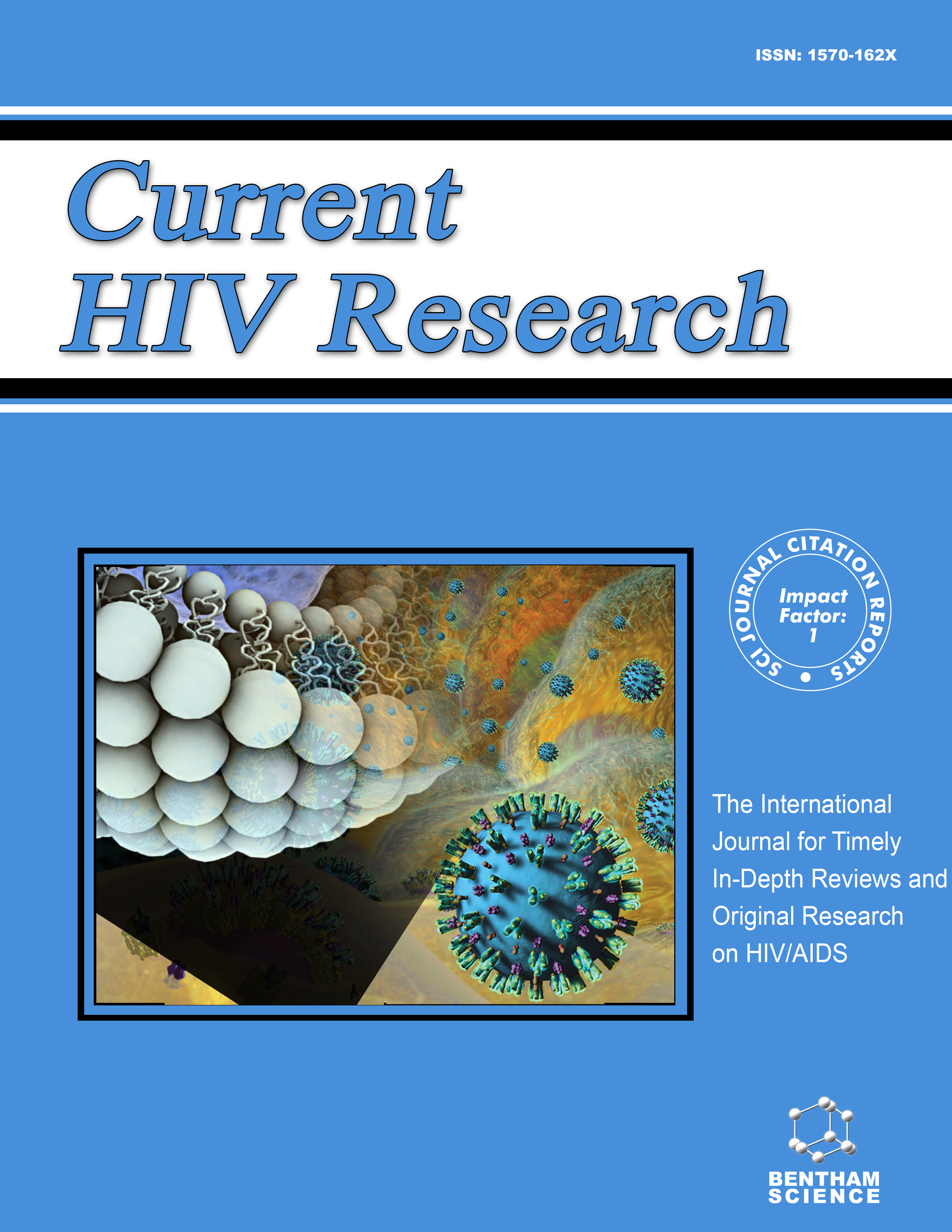- Home
- A-Z Publications
- Current HIV Research
- Previous Issues
- Volume 2, Issue 3, 2004
Current HIV Research - Volume 2, Issue 3, 2004
Volume 2, Issue 3, 2004
-
-
Adherence to Antiretroviral Therapies: State of the Science
More LessHIV-related morbidity and mortality have been dramatically improved in populations treated with combination antiretroviral therapy. Although it is widely recognized that adherence to the antiretroviral medication regimens is vital to treatment success, rates of adherence to the regimens are often poor. There is a large body of research exploring the problem of adherence to antiretroviral medications. The literature is, to date, Read More
-
-
-
Pathogenesis of HIV-Associated Non-Hodgkin Lymphoma
More LessAuthors: Deirdre Killebrew and Bruce ShiramizuIn the current era of highly active antiretroviral therapy (HAART), the prevalence of HIV-associated non-Hodgkin lymphoma (H-NHL) is not as high as in the beginning of the acquired immunodeficiency syndrome (AIDS) epidemic, but still remains above that of non-HIV-infected individuals. Therefore, the epidemiology suggests that the pathogenesis of H-NHL may be multifactoral, involving the interaction of the immune syst Read More
-
-
-
Recent Advances in Understanding the Molecular Mechanisms of HIV-1 Entry and Fusion: Revisiting Current Targets and Considering New Options for Therapeutic Intervention
More LessAuthors: Ingrid Markovic and Kathleen A. ClouseRecent advances in our understanding of the cellular and molecular mechanisms of HIV-1 entry provide the basis for novel therapeutic strategies that prevent viral penetration of the target cell-membrane, while reducing detrimental virus and treatment effects on cells and prolonging virion exposure to immune defenses. A number of potential sites for therapeutic intervention become accessible during the narrow window be Read More
-
-
-
Immune Restoration Disease: A Consequence of Dysregulated Immune Responses After HAART
More LessAuthors: Shelley F. Stone, Patricia Price and Martyn A. FrenchImmune Restoration Diseases (IRD) are a collection of atypical 'opportunistic infections' and inflammatory diseases seen in human immunodeficiency virus (HIV) patients after HIV viraemia is suppressed by highly active antiretroviral therapy (HAART). IRD probably reflect dysregulated immune responses against pre-existing infections by opportunistic pathogens, with different immunopathological mechanis Read More
-
-
-
Glycosylation of the ENV Spike of Primate Immunodeficiency Viruses and Antibody Neutralization
More LessNeutralizing antibody titers have been correlated with protection following vaccination against many viral pathogens. The logical target of protective antibody responses elicited by potential HIV vaccines should be the viral Env spike on the surface of the virion. However, the potency and titers of neutralizing antibodies that arise during HIV infection are generally discouragingly low and the antibodies that do arise recogniz Read More
-
-
-
Vpu: A Multifunctional Protein that Enhances the Pathogenesis of Human Immunodeficiency Virus Type 1
More LessThe Vpu protein is the smallest of the proteins encoded by human immunodeficiency virus type 1 (HIV-1). This transmembrane protein interacts with the CD4 molecule in the rough endoplasmic reticulum (RER), resulting in its degradation via the proteasome pathway. Vpu also has been shown to enhance virion release from infected cells. While much has been learned about the function of Vpu in cell culture systems, its Read More
-
-
-
HIV-1 Superinfection: Evidence and Impact
More LessSuperinfection is defined as infection by a second virus during an immunologic steady state, following infection by a primary virus. It is now well established that superinfection with HIV-1 occurs in humans. Detection of an increasing number of circulating recombinant forms, which result from infection of a cell by two or more clades, suggests that superinfection occurs more frequently than previously thought. The second virus Read More
-
-
-
Cytopenias in HIV Infection: Mechanisms and Alleviation of Hematopoietic Inhibition
More LessAuthors: Prasad S. Koka and Srinivasa T. ReddyHematopoietic abnormalities including anemia, cytopenias, and alterations of the stem cell plasticity in the bone marrow microenvironment commonly occur in HIV infected patients. These observations suggest that HIV-1 infection may affect processes important during early stages of hematopoiesis or stem cell differentiation. Hematopoietic abnormalities may be caused by altered stem cell differentiation possibly due Read More
-
-
-
The Challenge of Antiretroviral-Drug-Resistant HIV: Is There Any Possible Clinical Advantage?
More LessAuthors: Mauro Zaccarelli, Valerio Tozzi, Carlo F. Perno and Andrea AntinoriResistance to antiretroviral drugs is associated with reduced treatment options and, therefore, increased risk of disease progression or death. Despite the main goal of antiretroviral therapy should be achievement of complete suppression of HIV replication, the accumulation of resistance mutations in patients with multiple treatment failure makes this objective often difficult, or even impossible to obtain. Thus, clinicians sho Read More
-
Volumes & issues
-
Volume 23 (2025)
-
Volume 22 (2024)
-
Volume 21 (2023)
-
Volume 20 (2022)
-
Volume 19 (2021)
-
Volume 18 (2020)
-
Volume 17 (2019)
-
Volume 16 (2018)
-
Volume 15 (2017)
-
Volume 14 (2016)
-
Volume 13 (2015)
-
Volume 12 (2014)
-
Volume 11 (2013)
-
Volume 10 (2012)
-
Volume 9 (2011)
-
Volume 8 (2010)
-
Volume 7 (2009)
-
Volume 6 (2008)
-
Volume 5 (2007)
-
Volume 4 (2006)
-
Volume 3 (2005)
-
Volume 2 (2004)
-
Volume 1 (2003)
Most Read This Month
Article
content/journals/chr
Journal
10
5
false
en


